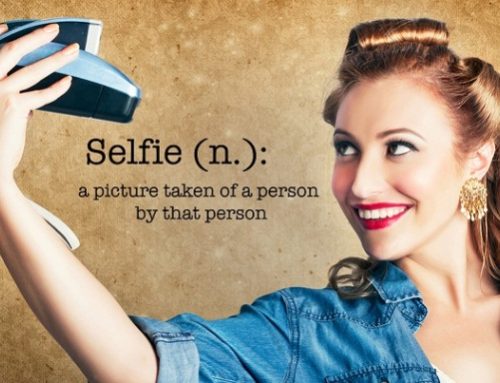The term “cryotherapy” refers to any cold therapy, so simply icing your knee with a bag of frozen peas counts. But whole-body cryotherapy (WBC), the current wellness trend of choice, involves stripping down to your skivvies and spending three minutes in a chamber that’s chilled to -270 degrees Fahrenheit. Fans of the treatment include athletes, actors, and all-around fitspirational folks including your chiropractor Dr. Ryan A. Stewart
Considering the questionable claims that WBC torches major calories, ramps up recovery, and can even fight depression, it’s easy to see why it’s gotten so popular. But how much of that is fact?
The Low Down
WBC might seem like the new kid on the block, but it’s been around longer than most realize. In 1978, a rheumatologist in Japan named Toshima Yamaguchi discovered that subjecting the body to extreme cold helped rheumatoid arthritis patients move better and feel less pain for up to four hours post treatment, according to Mark Murdock, managing partner of CryoUSA, a leading provider of cryotherapy chambers. Fast-forward to today, and the treatment’s still going strong—and it’s more accessible and affordable than ever.
Essentially, the goal of WBC is to rapidly overwhelm your cold sensors to the point where your brain’s tricked into thinking your body’s experiencing hypothermia, Murdock says. Theoretically, the extreme cold constricts blood vessels, driving excess fluid out to reduce pain, swelling, and inflammation. After the treatment, once the body realizes it’s not in crisis mode, it redistributes blood and oxygen, which may help with healing and cellular regeneration. “It’s a complete shock to the system,” she adds.
Though cold temperatures in general decrease blood flow (thus supporting part of the cryotherapy explanation), not all cold is created equal.
For example, ice packs or baths are more superficial forms of cold therapy—meaning their pain-relieving powers may not be as extensive. “Ice can only go so far,” Wiedman says. So a very deep injury, or one located in dense muscle tissue such as your quads or hamstrings, may benefit from the deeper penetrating cold experienced during cryotherapy. Not only that, but the cold in the cryo chamber is completely dry air, which cuts back on discomfort and still allows oxygen to get to the skin, Murdock says. Though it’s “intensely” cold, it’s not nearly as painful as sitting in a frigid pool for 10 minutes, he assures. And because the chambers are significantly colder than a 46(ish)-degree ice bath, you won’t have to spend nearly as much time chilling—literally—to feel results.
“It’s a little shocking the first time, because there’s no place on Earth that’s as cold as in that chamber,” Murdock says.
Safety First
Though the treatment itself can vary from location to location, there are a few safety measures that should be standard, Murdock says. First of all, when choosing where to go, avoid places that make outrageous claims—because if it sounds too good to be true, it probably is.
Before you begin the big freeze, the technician should explain the process, warn about possible risks, answer any questions, and take your blood pressure—this should be done every single time to make sure your heart can handle the 10-12 mmHg uptick in systolic blood pressure that occurs during the session. You’ll be given socks, slippers, and gloves, but otherwise you’ll be in bikini- and board short-type attire—all of which must be dry to keep frostbite at bay. Once you’re in the chamber, your head and chin remain above the cold zone, so if you’re ready to bounce before the three minutes are up, you can easily tell your tech to stop the session.
One major red flag to watch out for: You should never, ever be left to your own devices during a session; a trained technician should be in the room not only to walk you through the procedure beforehand, but also during your time in the chamber so he or she can monitor (and encourage!) you.
To Freeze or Not to Freeze?
A look at the rave reviews on Yelp and Instagram is enough to prove one thing: Anecdotally, whole-body cryotherapy is awesome. But—and this is a big but—the scientific results aren’t entirely conclusive. For example, one small study suggests WBC boosts recovery; other research saw a decrease in depression and anxiety ratings in a group of 26 participants. Yet another study suggests that the treatment offers considerable pain relief from osteorarthritis. On the flipside, a 2015 study notes that there isn’t enough hard evidence to say cryotherapy is effective at treating muscle soreness. Finally, though we hate to break this one to you, there’s no science that proves it’ll help you drop the lbs.
That said, if you’re convinced cryo’s no big deal, aren’t pregnant or planning on becoming pregnant, are generally healthy, and have gotten the green light from your doc, it may not be a bad idea to give it a try. In fact, for athletes in particular, this treatment may be a useful training tool, Wiedman says.
Just remember to be realistic. Of course whole-body cryotherapy isn’t going to carve a rock-solid core overnight or immediately send you speeding across the finish line with a PR under your belt. It’s an elective therapy (like massage), not a medical treatment or procedure, Murdock stresses. “It’s not going to fix any issues specifically, other than soothing, comforting, and providing relief, which is going to allow you to move better for three to four hours,” he says.




Leave A Comment
You must be logged in to post a comment.